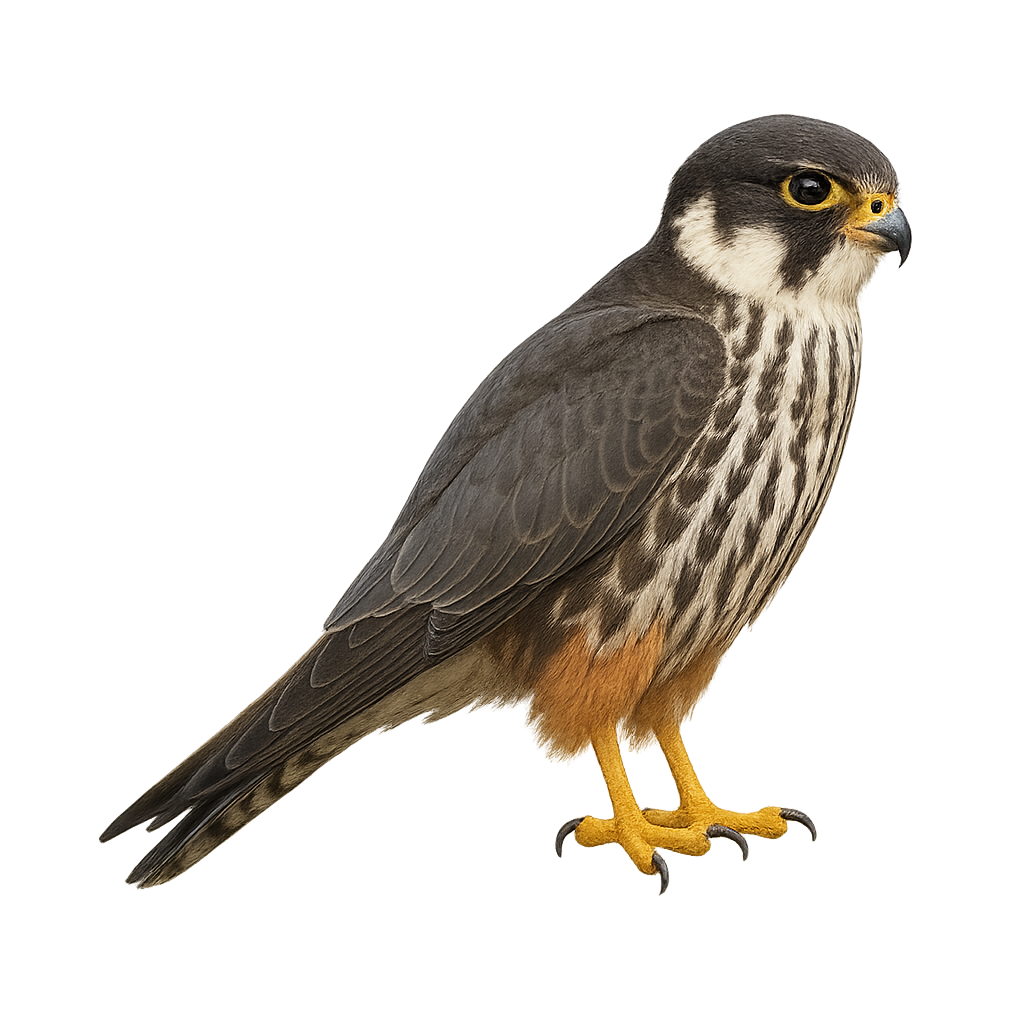Your wildlife photography guide.
Explore the eurasian hobby in detail, study its behavior, prepare your shots.
Where to observe and photograph the eurasian hobby in the wild
Learn where and when to spot the eurasian hobby in the wild, how to identify the species based on distinctive features, and what natural environments it inhabits. The WildlifePhotographer app offers tailored photography tips that reflect the eurasian hobby’s behavior, helping you capture better wildlife images. Explore the full species profile for key information including description, habitat, active periods, and approach techniques.
Eurasian Hobb
Scientific name: Falco subbuteo

IUCN Status: Least Concern
Family: FALCONIDAE
Group: Birds
Sensitivity to human approach: Shy
Minimum approach distance: 30 m
Courtship display: May to June
Incubation: 28-31 jours
Hatchings: July to August
Habitat:
Forests and woodlands
Activity period :
Primarily active during the day, with peak activity in the morning and late afternoon.
Identification and description:
The Hobby Falcon is a small diurnal raptor, often confused with other falcons due to its similar size, but it is distinguished by its elegant plumage and unique characteristics. It measures about 30 to 40 cm in length, with a wingspan of 70 to 90 cm, and weighs between 150 and 250 g. Its plumage is primarily grayish, with a darker head and back and a lighter belly. Males have a lighter plumage than females, which are generally larger and darker. This falcon primarily inhabits open areas such as meadows, heathlands, and sparse forests, as well as mountains and agricultural zones. It hunts by flying at high speed, capturing small birds, insects, and sometimes small mammals. Its flight is fast and direct, often interrupted by sharp turns and dives to capture its prey. While the species is not endangered, it faces threats such as habitat loss and the reduction of its prey populations.
Recommended lens:
300 mm – adjust based on distance, desired framing (portrait or habitat), and approach conditions.
Photography tips:
Use a telephoto lens to photograph from a distance, respecting the agile and fast-flying nature of the species.
Photograph early in the morning or late in the afternoon, when soft light enhances the hobbit falcon’s dark plumage, long pointed wings, and sleek silhouette in flight.
Look for it in open landscapes with scattered trees: light woodlands, heathlands, farmland with hedgerows and copses, and near wetlands. It often hunts on the wing over marshes, ponds, and rivers, catching dragonflies and small birds mid-flight.
Be patient and discreet. The Eurasian hobby is an agile but cautious raptor, sensitive to disturbance, especially near nesting areas.
The Eurasian hobby is classified as Least Concern by the IUCN. Although still relatively common, preserving its feeding and breeding habitats is essential to ensure healthy long-term populations.
The WildlifePhotographer App is coming soon!
Be the first to explore the best nature spots, track rutting seasons, log your observations, and observe more wildlife.
Already 1 431 wildlife lovers subscribed worldwide

